The Gobi Desert is the largest desert in Asia and the 4th largest in the world. It forms the border between China and Mongolia and is associated with countless rumours featuring UFOs and aliens thanks to its vastness and mysterious landscape. It is also an excavation site for dinosaur fossils.
[rpi]
The greatness and mystery of the Gobi Desert have always fascinated me. My 12-day road trip covering 2.500km in an old van was full of beautiful memories featuring purple horizons and hospitable nomads. Until this day this has been one of my most fantastic dreams come true.
Preparing for the trip
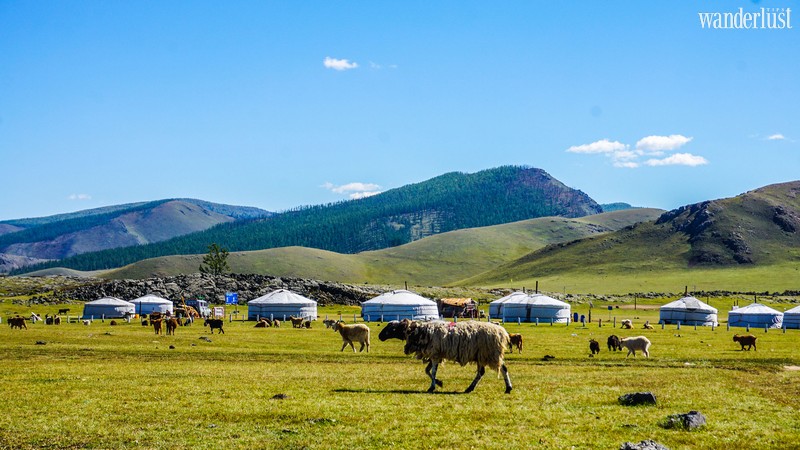
Through Couchsurfing, I was so lucky to meet Victor and Kashia’s family – a Polish family on the trip. It took them three days of bargaining to get the cheapest package price at 100 USD/day for five people (including car, driver, petrol and cooking appliances), and the tent rental for 8 USD/ day. Once that was negotiated, the 12-day road trip across the Gobi Desert could begin.
Only one thing really surprised me about the Gobi Desert – unlike our common association of deserts and sand, only a small area here is comprised of it. The topography here is quite diverse and ranges from rocky lands to rocky plateaus, meadows, caves and arid colourful wilderness.
We visited the Gobi Desert in September and there was no snow at that time. The sun was hot enough to burn your skin, yet the temperatures was cold and dry all the way from grassland to sand. Although it’s very cold, our equipment kept us warm in our tents with our sleeping bags and insulated mats, which kept away the cold of the night.
The Gobi Desert is one of wilderness – a large, harsh and quiet area, which adds to its mysterious attractiveness. In the world of smartphones, Facebook and 24/7 cable TV there are only a few places like the Gobi Desert on earth where you can completely get away from modern life. We experienced life in the most pristine way as we only used electricity from solar batteries to charge our phones and cameras.
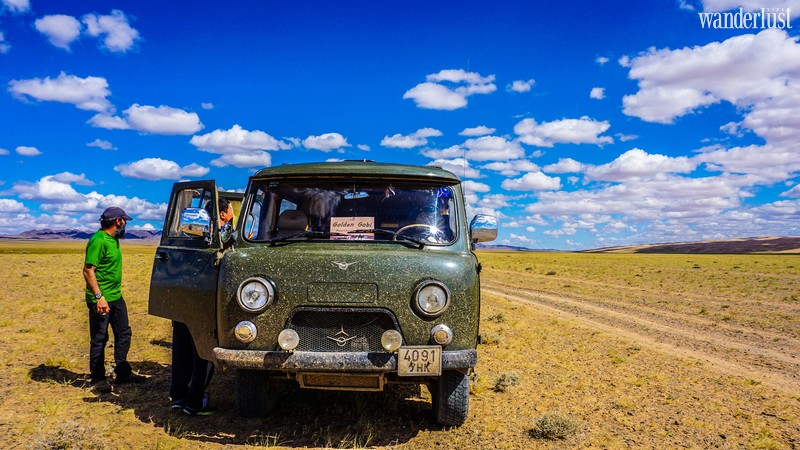
All the food is simple and easily prepared in a large box with basic cooking items needed for a road trip. We cooked for 2-3 days in turn. Each one cooked our traditional dishes to introduce to each other. Our team had five people, including three Polish, one person from Hong Kong and me from Vietnamese. We mostly chose ingredients like dried food, vegetables and canned meat, rice and packaged noodles- all easy to store.
In addition, we had a container holding 30 litres of water to cook for four days for five people. We were provided with water from a well in a village every four days. We just used it to cook, wash the dishes (in an economic way) and brush our teeth. We absolutely didn’t use it for individual things. We used wet wipes to clean our faces and bodies. We ourselves bought bottled drinking water to carry on the journey.
Discovering the nomadic life
In the world of walls, locks and fences, we found here people who were always willing to open their doors to welcome strangers. The Gobi Desert was truly something different and special for us thanks to this hospitality. The tent door of nomadic Mongolians is never locked. If you see a tent when you are wandering through a steppe or desert land, you can push the door to enter without a knock, no matter who you are, the nomads are always willing to welcome you. They may invite you to eat bread, yoghurt or horse milk and all for free. In return for this, you should give them a small gift or just some biscuits or candy because Mongolian people really like exchanging gifts. I personally found the food of nomadic Mongolians really difficult to eat, but the feeling when you sit in a nomad’s tent and feel how they feel is interesting and amazing.
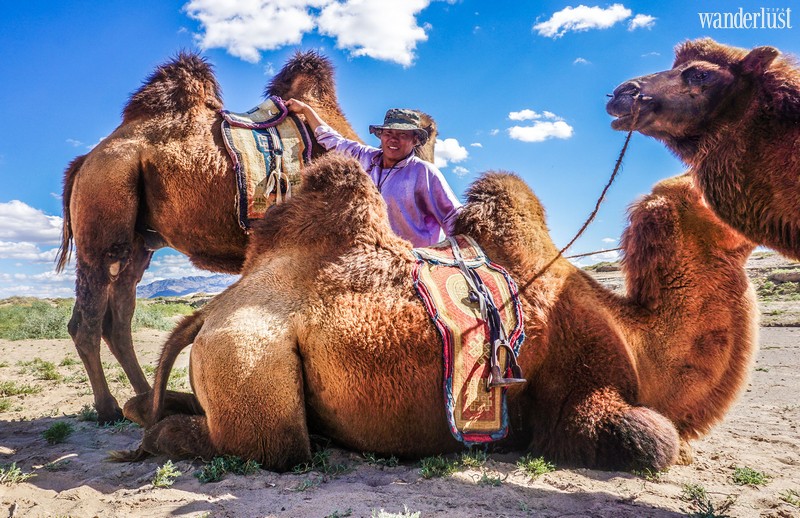
During the journey, we visited many nomadic families in the Gobi Desert. Some of them breed sheep, goats, horses; some raise camels or yak cows. So every time we visited a tent of a nomadic family, we enjoyed a kind of tea made from the milk of these animals. The nomads are following a self-sufficient way of life. They take food from the animals they breed.
There was one strange thing that surprised and shocked me: Enkhbat – a local driver – said: “If you are a male guest visiting the tent, and the daughter of the landlord likes you, they are willing to prepare a bed for their daughter and you, and the next day, you can sleep with her and if she gets pregnant, the family is considered to be a lucky one.”
Great moments in the Gobi Desert
In my memory, the Gobi Desert is a vast wilderness full of colours and magical lights. And for me, the most amazing part of this beauty is the light during the sunrise over the Gobi. I remember the morning when I heard my Hong Kong friend call; I put a thick jacket on in a hurry and looked out of the tent door. And then…I stood in a complete daze seeing lights so marvellous that I thought I was in a mythical dream.
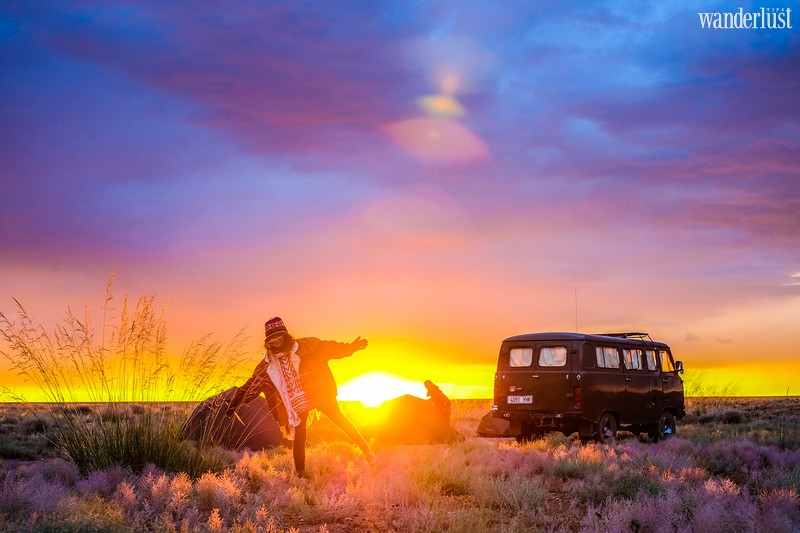
Across the purple horizon, the first light of day was shining and intertwined with the fog of the early morning. The sun was like a giant block of red flames rising from a vast and blurry space. The Gobi Desert woke me with a clear and pristine morning, like a revival from a dark night. The pure yellow of the morning covered the arid wilderness of the Gobi Desert. No word and no camera can describe and record that mesmerising beauty.
Perhaps we were all surprised, as no one talked to one another, we just stood there and felt the magical light flowing through each blood vessel. Everything was like a mythical dream, and we were just in a daze feeling it.
♦ Notes:
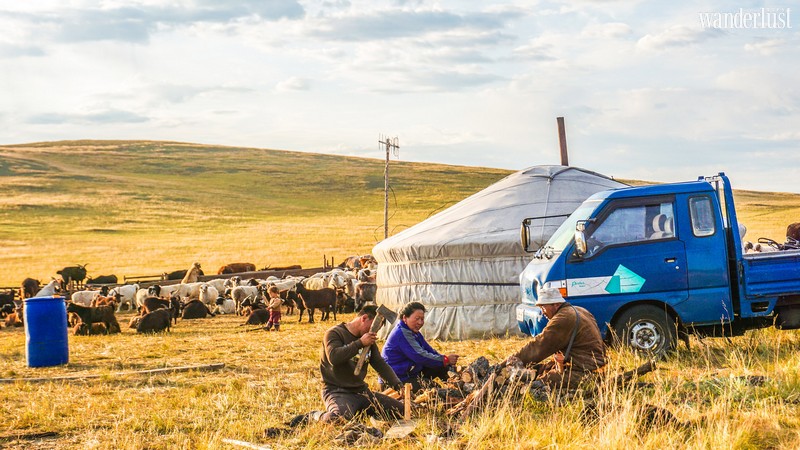
Temperatures in the Gobi fluctuate from 40°C in summer and -40°C in winter, when snow covers the sand.
Strong winds frequently happen in April and May. In July and August, the temperature is very high and the Naadam Festival takes place, which gets crowded. The best time to travel here is in September and October with sceneries coloured in red, green and yellow. After that, during winter, the weather is too tough for a visit.
The wind of the Gobi Desert blows up to 140km/ h, so it’s quite risky for visitors to travel in spring and autumn.
Mai Hương | Wanderlust Tips

